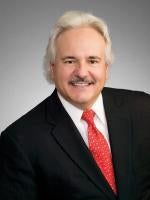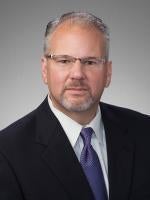While noting that Section 101 of the Patent Act broadly made various inventions and discoveries eligible for patents, the Supreme Court in Bilski v. Kappos, 130 S. Ct. 3218 (2010) also noted that its precedents provided “three specific exceptions to § 101's broad patent-eligibility principles: ‘laws of nature, physical phenomena, and abstract ideas.’” Rejecting a categorical rule that would render all business method claims unpatentable subject matter, the Bilski Court found that the patent claim as to hedging methods at issue in that case fell “outside of § 101 because it claims an abstract idea.” Since Bilski, the courts have attempted to navigate the murky and treacherous waters of “abstract ideas” in business method cases. In Fort Properties, Inc. v. American Master Lease LLC, Appeal No. 2009-1242 (Fed. Cir. 2012) the Federal Circuit waded into those waters, while in My Space, Inc. et al. v. Graphon Corp., Appeal No. 2011-1149 (Fed. Cir. March 2, 2012) the majority counseled courts to navigate around them if at all possible.
At issue in Fort Properties was a method relating to a real estate investment technique for certain tax-deferred exchanges. The method required aggregating real property, encumbering it with a master agreement, and then issuing various ownership shares to multiple parties via deeds. In this manner owners could buy and sell properties without tax liability. Other claims required the use of a computer to “generate a plurality of deedshares.”
Relying on the Supreme Court’s decision in Bilski that an inventive process is eligible for patent if it claims a practical application of an abstract idea, but not eligible if it merely claims an abstract idea, the Federal Circuit held that the claims were unpatentable as abstract ideas, even though the claims required physical world attributes such as deeds or other legal ownership documents. The Federal Circuit held that the majority of the claims, like Bilski, disclosed an investment tool. While the claims at issue in Bilski and in Fort Properties had some ties to the physical world (commodities and money in Bilski and deeds, contracts and real property in Fort Properties), the Federal Circuit found that both sets of claims were, at root, related to abstract concepts (hedging methods in Bilski and tax-free exchanges of real property in Fort Properties). The claims employing a computer were similarly held to be unpatentable because they did not impose meaningful limits on the claim scope, i.e., they were insignificant post-solution activity as opposed to meaningful limits like “specific application to the Internet and a cyber-market environment” as in Ultramercial, LLC v. Hulu, LLC, 657 F.3d 1323, 1328 (Fed. Cir. 2011) (holding claims patent-eligible where invention itself involved “advances in computer technology” and “required intricate and complex computer programming”).
The problem for inventors and practitioners has been to map the contours of “unpatentably abstract.” The concept of “abstract” is, well, abstract. Research Corp. Techs., Inc. v. Microsoft Corp., 627 F.3d 859, 868 (Fed. Cir. 2010) (“this court also will not presume to define ‘abstract’ beyond the recognition that this disqualifying characteristic should exhibit itself so manifestly as to override the broad statutory categories of eligible subject matter”). Some practitioners attempt to improve their chances of avoiding an “unpatentably abstract” determination by linking the claims to specific industrial processes. Such an approach follows the earlier Supreme Court precedent in Diamond v. Diehr, 450 U.S. 175 (1981), where the Supreme Court upheld claims directed to “molding raw, uncured synthetic rubber into cured precision products” using a mathematical formula and computer.
However, the fact remains that navigating around “abstract ideas” has proven quite difficult—as reflected in the Federal Circuit cases that have followed in the wake of Bilski. In My Space, Judge Plager summed up the current patent-eligible law best: Judge Plager said, “This effort to descriptively cabin [U.S. Patent Act] section 101 jurisprudence is reminiscent of the oenologists trying to describe a new wine. They have an abundance of adjectives – earthy, fruity, grassy, nutty, tart, woody . . . but picking . . . which ones apply depends less on the assumed content of the words than on the taste of the tongue pronouncing them.” My Space, Inc. et al. v. Graphon Corp., Appeal No. 2011-1149 (Fed. Cir. March 2, 2012). So, he counseled the courts to navigate away from Section 101 patent eligibility “by exercising their inherent power to control the processes of litigation…and insist that litigants initially address patent invalidity issues in terms of the conditions of patentability defenses as the statute provides, specifically §§ 102, 103, and 112…..[C]ourts should avoid reaching for interpretations of broad provisions, such as § 101, when more specific statutes, such as §§ 102, 103, and 112, can decide the case.” (In his dissent Judge Mayer disagreed: “The issue of whether a claimed method meets the subject matter eligibility requirements contained in 35 U.S.C. § 101 is an "antecedent question" that must be addressed before this court can consider whether particular claims are invalid as obvious or anticipated.”)
But even if the courts are able to follow Judge Plager’s admonition to steer clear of patent eligibility, inventors and practitioners cannot. We can only hope that the Supreme Court will take the opportunity to provide better navigational aids for patent-eligibility if it takes up the Ultramercial, LLC v. Hulu, LLC case, as to which a petition for certiorari is now pending.




 />i
/>i

